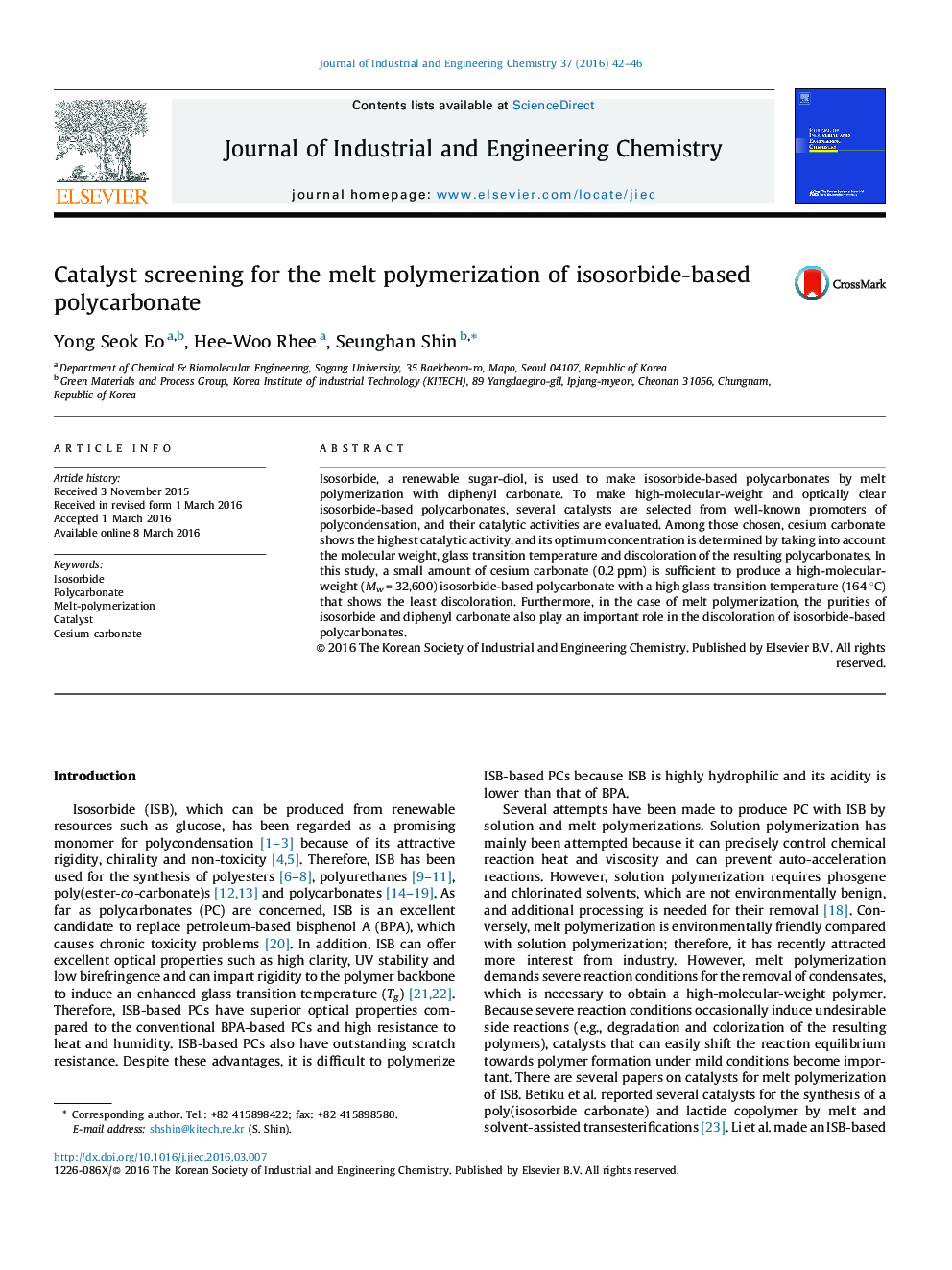| Article ID | Journal | Published Year | Pages | File Type |
|---|---|---|---|---|
| 227265 | Journal of Industrial and Engineering Chemistry | 2016 | 5 Pages |
Isosorbide, a renewable sugar-diol, is used to make isosorbide-based polycarbonates by melt polymerization with diphenyl carbonate. To make high-molecular-weight and optically clear isosorbide-based polycarbonates, several catalysts are selected from well-known promoters of polycondensation, and their catalytic activities are evaluated. Among those chosen, cesium carbonate shows the highest catalytic activity, and its optimum concentration is determined by taking into account the molecular weight, glass transition temperature and discoloration of the resulting polycarbonates. In this study, a small amount of cesium carbonate (0.2 ppm) is sufficient to produce a high-molecular-weight (Mw = 32,600) isosorbide-based polycarbonate with a high glass transition temperature (164 °C) that shows the least discoloration. Furthermore, in the case of melt polymerization, the purities of isosorbide and diphenyl carbonate also play an important role in the discoloration of isosorbide-based polycarbonates.
Graphical abstractBiobased polycarbonates are prepared by melt polymerization of isosorbide and diphenyl carbonate using several polycondensaton catalysts. Cesium carbonate shows the highest catalytic activity and successfully synthesizes a high-molecular-weight (Mw = 32,600) and high-Tg (164 °C) polycarbonate with low concentration (0.2 ppm). The resulting polycarbonate shows clear white color by suppressing the discoloration caused by melt polymerization.Figure optionsDownload full-size imageDownload as PowerPoint slide
